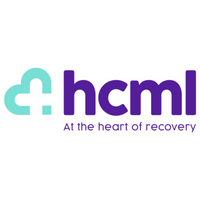Personalised preventative wellbeing is influencing benefits strategy
Preventative solutions for employee health and wellbeing have traditionally been incorporated into private medical insurance (PMI) offerings. These can include regular health screenings for things such as cholesterol, blood pressure and diabetes; cancer screenings; vaccines; and monitoring chronic conditions.
But this does little to address the rise in employee health complaints, such as the increase of common mental health disorders in 18-24-year-olds or the fact that more than 30 million working days are lost due to musculoskeletal (MSK) conditions every year in the UK. Here’s how to take a proactive and preventative approach to employee wellbeing that benefits employees and employers alike:
Combatting insurance premium increases
In light of rising premium costs and lack of younger employee engagement, it’s time to switch traditional employee health insurance plans for a solution that incorporates a range of wellbeing benefits and can be offered to every employee in the business.
Examples of this might be a healthcare trust or master trust, where employers can tailor their own benefits and rules, and add in specific wellbeing benefits that suit the whole workforce.
In our latest HCML research, which surveyed more than 500 employees and 200 employers, we found that employees are keen to receive support from their workplace in areas such as:
- Nutrition (38%)
- How to keep active (36%)
- How to sleep well (36%)
It is well documented that these health concerns directly impact both physical and mental health, so incorporating wellbeing benefits that address this will encourage employees to take control of their own health and prevent future ill health conditions.
For employers, this means reduced sickness absence, increased productivity across the workforce and cost efficiencies due to insurance premium tax (IPT) savings.
Personalisation is paramount
Beware of the "one size fits all approach".
Typically, organisations tend to take a more reactive approach to employee health issues. For example, providing support such as physiotherapy for an employee experiencing back pain.
While that may ‘fix’ the problem in the short-term, other contributing lifestyle factors may mean that the condition presents itself again.
When it comes to assessing ill health, it’s important to consider what other risk factors may be contributing to or causing the condition.
For example, in a major client we found that out of those employees who presented with a health condition, 94% were inactive and 53% had insufficient sleep.
Couple this with the fact that 40% were repeat conditions, addressing these personal risk factors is key to prevention.
Taking a stepped care approach to treatment and putting focus on addressing these underlying risks, reduces the need for costly clinical interventions. It also puts the onus on the employee to take preventative action to improve their overall health and wellbeing combatting recurring conditions.
HCML research found that about 79% of clients, who incorporated wellbeing benefits into their strategy covering a range of lifestyle factors, such as nutrition, exercise and gender-specific support enabling this approach, had unbroken attendance for 12 months or more thereby reducing overall claims costs.
Data insights underpin significance of wellbeing benefits
Once you tailor that personalised approach and begin assessing the impact of a range lifestyle factors on ill health conditions, you amass a huge repository of data.
You’ll start to identify patterns in health and wellbeing across your workforce, such as trends across specific departments or commonalities across hybrid workers.
This is where the magic happens.
Using this valuable insight, you can really start to tailor your wellbeing benefits and provide targeted interventions to better support employee health and business needs. It can also lead to the development of new initiatives and ways of working that improve the health and wellbeing of your workforce.
Proving value that’s tangible
Our research found that despite nearly 85% of employers offering an employee assistance programme (EAP), only 27% of employees realise they exist. This is likely why employers reported utilisation at just 3%-5%.
We also found that almost half (47%) of employers who captured sickness absence management information aren’t using the data to define the wellbeing solutions they provide within their business.
A lack of insight or data interrogation across wellbeing initiatives means it is very difficult to prove any kind of ROI or return on experience.
Through personalisation of benefits and the right data capture and analysis, we implemented a preventative benefits strategy that achieved 95% employee engagement rate and about £12m absence cost savings per annum.
Understanding how personalisation leads to prevention and how data enables targeted wellbeing interventions, you begin to see how this creates huge cost efficiencies in the long run.
Copies of our research are available by emailing: [email protected]
Supplied by REBA Associate Member, HCML
HCML is a health and wellbeing provider, offering integrated and personalised healthcare solutions.








